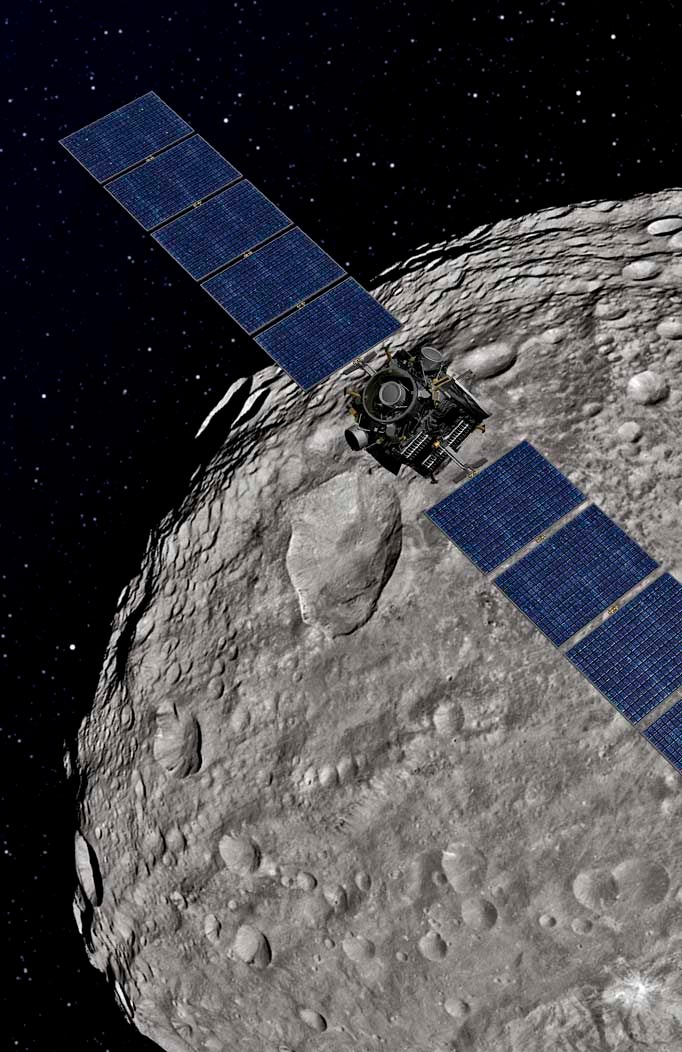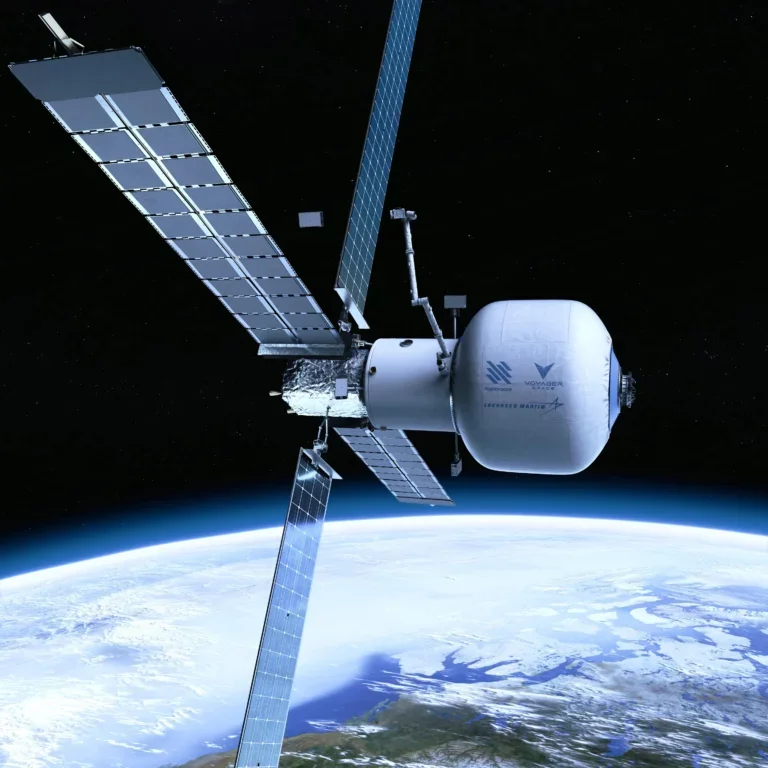At the start of this 3-month final approach to this massive body in the asteroid belt, Dawn is 752,000 miles (1.21 million kilometers) from Vesta, or about 3 times the distance between Earth and the Moon. During the approach phase, the spacecraft’s main activity will be thrusting with a special, hyper-efficient ion engine that uses electricity to ionize and accelerate xenon to generate thrust. The 12-inch-wide ion thrusters provide less thrust than conventional engines, but they will provide propulsion for years during the mission and provide far greater capability to change velocity.
“We feel a little like Columbus approaching the shores of the New World,” said Christopher Russell from the University of California, Los Angeles (UCLA). “The Dawn team can’t wait to start mapping this terra incognita.”
Dawn previously navigated by measuring the radio signal between the spacecraft and Earth, and used other methods that did not involve Vesta. But as the spacecraft closes in on its target, navigation requires more precise measurements. By analyzing where Vesta appears relative to stars, navigators will pin down its location and enable engineers to refine the spacecraft’s trajectory. Using its ion engine to match Vesta’s orbit around the Sun, the spacecraft will spiral gently into orbit around the asteroid. When Dawn gets approximately 9,900 miles (16,000 km) from Vesta, the asteroid’s gravity will capture the spacecraft in orbit.
“After more than 3.5 years of interplanetary travel, we are finally closing in on our first destination,” said Marc Rayman from NASA’s Jet Propulsion Laboratory (JPL) in Pasadena, California. “We’re not there yet, but Dawn will soon bring into focus an entire world that has been, for most of the two centuries scientists have been studying it, little more than a pinpoint of light.”
Scientists will search the framing camera images for possible moons around Vesta. None of the images from ground-based and Earth-orbiting telescopes have seen any moons, but Dawn will give scientists much more detailed images to determine whether small objects have gone undiscovered.
The gamma ray and neutron detector instrument also will gather information on cosmic rays during the approach phase, providing a baseline for comparison when Dawn is much closer to Vesta. Simultaneously, Dawn’s visible and infrared mapping spectrometer will take early measurements to ensure it is calibrated and ready when the spacecraft enters orbit around Vesta.
Dawn’s odyssey, which will take it on a 3-billion-mile journey, began September 27, 2007, with its launch from Cape Canaveral Air Force Station in Florida. It will stay in orbit around Vesta for 1 year. After another long cruise phase, Dawn will arrive at its second destination, an even more massive body in the asteroid belt called Ceres, in 2015.
These two icons of the asteroid belt will help scientists unlock the secrets of our solar system’s early history. The mission will compare and contrast the two giant asteroids, which were shaped by different forces. Dawn’s science instrument suite will measure surface composition, topography, and texture. In addition, the Dawn spacecraft will measure the tug of gravity from Vesta and Ceres to learn more about their internal structures.
At the start of this 3-month final approach to this massive body in the asteroid belt, Dawn is 752,000 miles (1.21 million kilometers) from Vesta, or about 3 times the distance between Earth and the Moon. During the approach phase, the spacecraft’s main activity will be thrusting with a special, hyper-efficient ion engine that uses electricity to ionize and accelerate xenon to generate thrust. The 12-inch-wide ion thrusters provide less thrust than conventional engines, but they will provide propulsion for years during the mission and provide far greater capability to change velocity.
“We feel a little like Columbus approaching the shores of the New World,” said Christopher Russell from the University of California, Los Angeles (UCLA). “The Dawn team can’t wait to start mapping this terra incognita.”
Dawn previously navigated by measuring the radio signal between the spacecraft and Earth, and used other methods that did not involve Vesta. But as the spacecraft closes in on its target, navigation requires more precise measurements. By analyzing where Vesta appears relative to stars, navigators will pin down its location and enable engineers to refine the spacecraft’s trajectory. Using its ion engine to match Vesta’s orbit around the Sun, the spacecraft will spiral gently into orbit around the asteroid. When Dawn gets approximately 9,900 miles (16,000 km) from Vesta, the asteroid’s gravity will capture the spacecraft in orbit.
“After more than 3.5 years of interplanetary travel, we are finally closing in on our first destination,” said Marc Rayman from NASA’s Jet Propulsion Laboratory (JPL) in Pasadena, California. “We’re not there yet, but Dawn will soon bring into focus an entire world that has been, for most of the two centuries scientists have been studying it, little more than a pinpoint of light.”
Scientists will search the framing camera images for possible moons around Vesta. None of the images from ground-based and Earth-orbiting telescopes have seen any moons, but Dawn will give scientists much more detailed images to determine whether small objects have gone undiscovered.
The gamma ray and neutron detector instrument also will gather information on cosmic rays during the approach phase, providing a baseline for comparison when Dawn is much closer to Vesta. Simultaneously, Dawn’s visible and infrared mapping spectrometer will take early measurements to ensure it is calibrated and ready when the spacecraft enters orbit around Vesta.
Dawn’s odyssey, which will take it on a 3-billion-mile journey, began September 27, 2007, with its launch from Cape Canaveral Air Force Station in Florida. It will stay in orbit around Vesta for 1 year. After another long cruise phase, Dawn will arrive at its second destination, an even more massive body in the asteroid belt called Ceres, in 2015.
These two icons of the asteroid belt will help scientists unlock the secrets of our solar system’s early history. The mission will compare and contrast the two giant asteroids, which were shaped by different forces. Dawn’s science instrument suite will measure surface composition, topography, and texture. In addition, the Dawn spacecraft will measure the tug of gravity from Vesta and Ceres to learn more about their internal structures.










